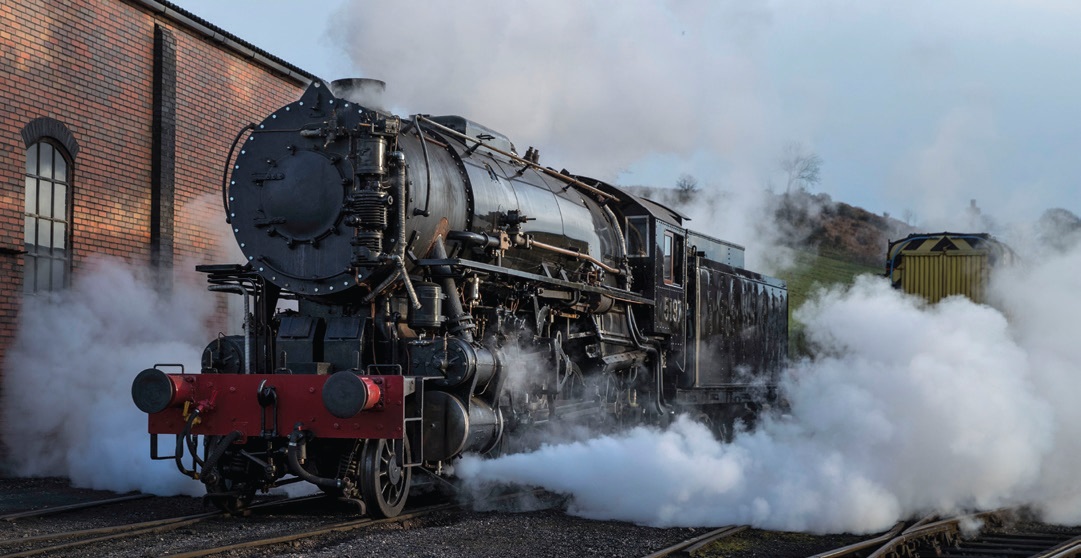The tribology train keeps rolling
Edward P. Salek, CAE, Executive Director | TLT Headquarters Report January 2019
STLE connections will put your career on the right track.

Steam locomotive technology lives on, especially in the UK where heritage societies are rebuilding classic locomotives and, in some cases, creating reproductions of models that did not make it into preservation.
Photo courtesy of Dave Gibson Photography.
There’s no obvious link between steam railway locomotives and the benefits of STLE membership. However, the December Headquarters Report column, which was inspired by a family visit to a railroad museum, led to an exchange that demonstrates the power of STLE’s Connect, Learn, Achieve value proposition.
Last month I referenced the link between steam-era transportation technology and the application of tribological principles. While numerous researchers, engineers and technicians were behind these developments, I cited the work of Livio Dante Porta, an Argentinean engineer who made innovative modifications to mid-20th Century locomotive systems to obtain higher performance, energy efficiency and reduced pollution.
Not long after the column was published, David Phillips, a 45-year STLE Life Member based near Manchester, England, provided an intriguing and educational afterword to the story. He is a hydraulic fluid and lubricant consultant and also a railway enthusiast who does volunteer work on the Churnet Valley Railway, a preservation society in the UK.
Dave put Porta’s career into better context. “There’s no doubt Porta was the last great steam locomotive engineer. Unfortunately, he was developing his concepts at a time when most of the attention elsewhere had already turned from steam to diesel/electric traction,” he wrote.
“In Europe, for example, André Chapelon, a noted French mechanical engineer, had made significant advances in steam loco design just before the Second World War, and the new designs in post-war commercial operation were very successful. However, SNCF (the French national railway) had lost interest in steam and saw the future as being in electric traction. Consequently, Chapelon left SNCF in 1953, although he continued to design locos for export from France to South America.
“Chapelon retired in 1967 and two years later Porta gave a lecture on future steam loco design in Manchester to the Institute of Loco Engineers. This was also about two years after the UK had stopped using steam for passenger traffic. At the start of his paper he generously acknowledged that the inspiration for his work came from an exhaustive study of Chapelon’s work!”
For readers who are not fans of steam locomotive technology, there are still lessons to be learned here. They revolve around the Connect, Learn, Achieve value proposition. To begin, my exchange with Dave Phillips would not have happened without our link through STLE. This power to connect with people who share a common interest is valuable, both for the opportunity to glean information and insights and to make those exchanges on a personal level.
The learning aspect of our value proposition is often based on written material or courses, such as this magazine or group education programs. But as was the case in my exchange with Dave Phillips, it becomes more focused and enjoyable when the learning happens through a personal networking connection.
Finally, this culture of information sharing, which means knowing where to find reliable information and how to put it into the proper context, unlocks your potential for professional achievement.
These three factors in combination make Connect, Learn, Achieve more than just a slogan. It summarizes the value of STLE membership and reminds us that, while technology will always change, personal insights and connections remain at the core of professional achievements.
You can reach Certified Association Executive Ed Salek at esalek@stle.org.